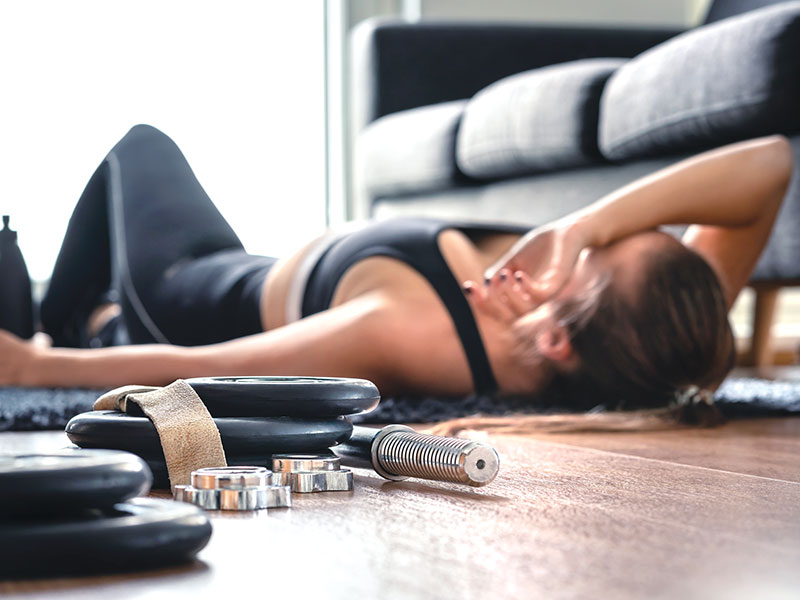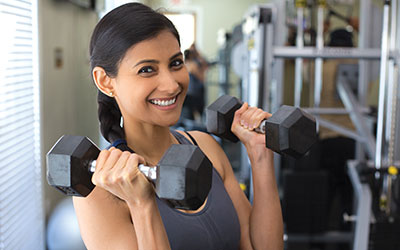With intense peer and social media pressure to improve their physiques, teens tend to blindly follow compulsive exercise regimens and crash diets resulting in over-exercise and anorexia/bulimia which cause more harm than good – Sneha Arora

Adolescence is a period of intense physical, psychological and emotional changes for teens who experience deep emotional turmoil, highs and lows. A good antidote is physical exercise. It not only prevents lifestyle disorders in adulthood but also contributes to overall mental and physical well-being of teenage children.
However with intense peer and social media pressure to improve their physiques, teens tend to blindly follow compulsive exercise regimens and crash diets resulting in over exercising and anorexia/bulimia which cause more harm than good. Therefore it’s important that parents monitor their adolescents’ exercise schedule and diet closely.
Recommended exercises
The best workouts are aerobics, strength training and flexibility and stretching exercises.
Sports such as swimming, rowing, basketball, running, tennis, and biking are excellent body and stamina-building stress busters.
Body weight exercises such as squats, push ups, pull ups, sit ups and tug of war are also safe ways to strengthen muscles, improve metabolism and increase stamina.
However warm up exercises of 20 minutes followed by dynamic stretches should be done before starting a weight training programme followed by another round of stretching at the end.
Strength/weight training should be limited to three to five times a week on non-consecutive days. A certified trainer will gradually increase the regimen and weights. If teens stress skeletal frames by lifting excess weights they can suffer serious injury.
For teens who play sports, strength training is often included through conditioning drills and other activities. However, prescribed safety gear should always be used.
For parents it’s important to emphasise the enjoyment of physical exercise rather than encourage it as a weight reduction goal. This will prevent children from becoming too conscious about their weight which can create body image anxiety and result in over-exercise. Professionally recommended exercise programmes and diets are the best prescription for teens to remain fit and healthy.
How much is too much?
The usual recommendation for adolescents is 60 minutes exercise every day, five days a week. Their bodies are still developing and they need sufficient calories to support the rigours of exercise. They also need good doses of protein post-workouts to rebuild muscle tissue.
If you observe mood swings, irritability or unexplained appetite change, you need to reassess your child’s workout regimen.
In case of teens pursuing competitive sports, exercise regimens tend to be longer, and need to be supported with guidance from a qualified coach and sports nutritionist.
 Over-exercising dangers
Over-exercising dangers
Not a few teens over-exercise, hoping to build six packs and/or lose weight. In such cases it’s important to explain that over-exercising leads the body to produce cortisol (a stress-inducing hormone) instead of the happy hormone — endorphins. Cortisol prompts mood swings and anxiety and impairs concentration. On the other hand endorphins released through exercise relieve stress, improve sleep and prevent weight gain.
Educate your teen about the difference between weight training and weight-lifting/ bodybuilding/power-lifting. Weight training is focused on improving musculoskeletal strength, metabolism, stamina and preventing hormonal imbalance. Whereas, the latter are long-term goal-based programmes for professional body builders and athletes.
Nutritional supplements
It’s not unusual for gym trainers and fitness instructors to recommend nutritional supplements for teenagers. Please note that fitness trainers are not qualified to prescribe nutritional supplements which should be taken only on the advice of sports nutritionists and verified by a qualified medical practitioner.
A balanced diet of natural foods replenishes the body with vital nutrients and provides the necessary energy boost which teens on a fitness workout regimen require. Only children competing in professional sports sometimes require a professionally administered nutritional supplement intake plan.
Exercise-friendly foods
To follow a 60-minute per day workout schedule, five days per week, adolescents need to eat healthy balanced meals.
Avoid aerated drinks, packaged juices and sports drinks. They are loaded with excess sugar and/or sugar substitutes
Include fresh fruit juice, butter milk, unsweetened milk shakes, and tender coconut water in your daily diet
Snack on vegetables, fruits, nuts and seeds
Don’t skip breakfast
Avoid junk foods
After every exercise session, eat protein-rich foods such as eggs, chicken, nuts, seeds, fish, channa, ragi balls, rajma, green gram sprouts, meat cutlets, paneer sandwiches, soya balls or soya-roti rolls.
(Sneha Arora is a Bangalore-based fitness instructor certified in exercise therapy, zumba, aqua zumba, and functional training)























